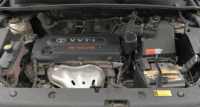It may still be a long way from being a legend, but it aspires to be one. It has a whole army of admirers, millions of sold copies and good reputation of real Japanese car. In the first part of the review we have already found out that Rafik is really not deprived of neither a qualitative body, nor an enduring running gear, nor reliable electrics. But is it so good with engines and gearboxes? Let's look together.

Transmission .
All-wheel drive of the second generation RAV4 is quite different from what you are used to see in typical crossovers. It is permanent all-wheel drive with an inter-axle differential. If to speak about the nearest analogues, it is Mitsubishi Lancer Evo or close relative of Toyota Celica from which the mechanism is actually inherited. The angular gearbox docked to the gearbox has inter-axle differential and there is no coupling at the back axle, only a gearbox and a ring gearbox.
Taking into account low power of "Rafika" engines, one can break something in the transmission only with big skill. Among the resource failures, one can usually meet only deterioration of PTO shaft supports and wear of CV joints.
The cardan shaft normally requires attention after one-hundred-and-a-half thousand run, and CV joints are conditionally "eternal": they fail if the cover and grease are damaged or not timely replaced, or after mechanical damage. Increased play in front joints usually appears only after 200-250 thousand km.
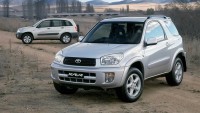
Angular gearbox with a differential, it is the same as rear axle power take-off or transfer gearbox, which is rather expensive. But at the same time it is reliable. Problems usually appear if you miss the oil level or damage of seals. A new gearbox costs from 120k roubles, but luckily it is no problem to buy not new but alive. Nevertheless, regular checks for oil leaks and presence of oil are obligatory.
Front-wheel drive cars have even simpler transmission, there are no driveshafts, no transfer case, no rear gearbox. CVTs with 1.8L engine don`t have special overloads and are long-lived.
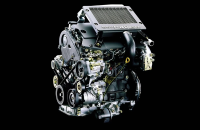
Cars with manual transmission are comparatively rare, the main mass of RAV4 has automatic transmission. But all the same we shall note, that "mechanics" without surprises, its resource is big, especially if not to overload synchronizers with fast shifts and to change oil in proper time.
As to the automatic transmission, it is simply superb here. Boxes of U140 series have deserved the right to be called one of the best automatics long time ago. Of course, it has only four steps, though with electronic control, but the multistage automatic gearbox does not provide significant economy of fuel on a rather "lop-sided" car. In the city cycle partial lockup of automatic transmission and active braking of engine allows having quite acceptable fuel consumption. Pay no attention to the passport data of consumption, it turns out all the same about fifteen litres per one hundred, only installation of a variator could reduce it by one and a half - two litres more.
"Weaknesses" are also present in this wonderful U140, it's the front planetary gear and the rear cover. However, with timely oil replacement in the box, good electronics and absence of overheating one can face problems of these units only after run in 300-350 thousand kilometres, if not later. Only with 3.0-3.3 motors in Lexus the figures can be a little bit less impressive.

TRANSMISSION
At maximum mileage the drum seat breaks due to unfortunate compression teflon ring. If owners regularly abuse brisk starts, linings of transmission gearbox may be worn out within 200 thousand mileage.
The most frequent trouble of automatic transmission in RAV4 of the second generation is malfunction of automatic transmission control unit. Mainly it is the result of unreliability of contacts due to factory "cold soldering", but paths are also damaged due to vibrations, and firmware malfunction.
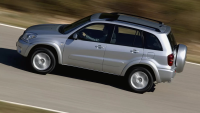
In the photo: Toyota RAV4 3-door '2000-03
Pictured: Toyota RAV4 3-door '2000-03
About five years ago, malfunctions of automatic transmission electronics were more common than mechanical ones. And I can say that such defects will clearly continue to occur.
Motors
The main 2.0 and 2.4 litre engines found in the Toyota RAV4 are our old familiar 1AZ-FE and 2AZ-FE, which I've already written about in my review of the Toyota Camry XV40, but the 1.8 engine is a completely different series, the 1ZZ-FE. In addition, there are also 1CD-FTV series diesel engines.
The 1AZ-FE and 2AZ-FE engines differ only in displacement, in operation they are exactly the same.
The first series of these engines had one unpleasant feature: the threads in the cylinder block were "floating". As a result, the cylinder head lifted, the gas joint malfunctioned and the cylinder-head gasket blew. In cars with high mileage this problem, most likely, has already been solved, and within the framework of the recall campaign, the thread has been reinforced by inserting a bushing, and the same is done for repairs. The defect is especially apparent at overheating, and they do occur.
The radiators on these cars are quite weak and tend to lose their honeycomb, but the main culprit for leaks and overheating is the pump. It needs to be replaced every 50k mileage, even if the original part is used every time. When buying non-original, look at the configuration of the blades: too simple constructions with small impeller size can fail to provide proper work of the cooling system of the 2.4L engine.
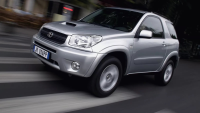
Not so good and reliable design of the catalytic converter on the pre-styled cars is prone to catalyst cracking during cold starts and overheating in summer. In addition, there are four oxygen sensors and they are not very reliable, which greatly increases the likelihood of failure. After restyling, the manifold has changed on European models, with longer life, and only two lambda sensors are left. But anyway, after 200-250 thousand kilometres, it may start chipping, and it may even damage piston group. And therefore, I strongly recommend to permanently check its condition.
power units
Troubles related to oil leaks both through oil pressure sensor on the block and through not so good ventilation system also happen regularly. By the way, the throttle valve, which quickly gets clogged, and the inlet manifold, literally overgrowing with deposits from within, suffer at the same time. Therefore, for mileages over two hundred thousand kilometres it is better not only to clean throttle and crankcase ventilation system, but also to dismantle and clean the whole intake. It is better to do it with inspection and replacement of all seals, from injector rings to inlet manifolds. The rubber elements come loose, causing the intake to become leaky.

LDPM getting greasy is a particular nuisance: it's not conveniently located and gets dirty. Cleaning it may help if the engine runs erratically, but with high mileage and irregular maintenance it's no good and you'll have to replace it.
The timing chain life ranges from 150,000 to 250,000-300,000 kilometres, which is a good indicator for modern engines. The phasing unit can fail to live up to these mileages, and the tensioner in these engines can be called an "expendable". It needs to be replaced every 50-60 thousand km. Fortunately, these parts are not especially expensive.
If the engine became noisier, it is possibly time for valve adjustment, there are no hydro-compensators here. Check the chain at the same time.
In general, AZ-FE is a fine example of the most reliable engine, which does not pester in service breakages. Certainly, in many respects such big resource is caused by the small interval of service which makes 10 thousand kilometres. But even in the USA, where the attitude to the routine maintenance is different, these motors are perfectly well behaved.
The engine of 1.8-liter series 1ZZ-FE is appreciably different from the "older" ones. I'm not inclined to strike a "Toyotone-hating" note, but this is one of Toyota's most unfortunate motors from the turn of the century.
The engine was introduced back in 1998, but until 2002 the manufacturers couldn't (or wouldn't) fix the most obvious flaw - "oiling" of the piston group. Rings were lodged due to too small oil drain holes in the piston. The thin-walled cast iron liner, in turn, is easily worn out due to ring linings. After 2003, the piston group has been replaced, but the chances of encountering an 'oil-absorbing' engine remain.
Part of the engines were repaired "kolhozno": by drilling holes in a piston or replacing pistons without replacing the liner. And now the repair with "throwing in" rings occurs regularly, as soon as oil consumption reaches a litre or two per thousand kilometres.
In case of the slightest overheating the cylinder block "led", not to mention the guaranteed burial of piston rings.
The resource of timing chains also is not like the older brothers, 150 thousand is more likely the upper limit of run, and the jumps happened with run to a hundred.
Another disadvantage is the absence of classic cast iron valve seats. Upon damage, which happens relatively often, it is necessary to grind hardened coating and install cast iron. Or replace the entire cylinder head. And in spite of all measures, the maximum service life of the piston group will not exceed 200 thousand kilometres.
fuel
The "little things" such as dirty throttle, flying coils, bad engine mounts, oil leak etc. have not disappeared anywhere. And this is one of the most common Toyota engines in the "middle" class! Not surprisingly, the blow to the image was a sensitive one, and the ZZ series is still remembered to this day. I would only advise against buying a car with such engine, especially as it will be front-wheel drive for sure.
In the photo: Toyota RAV4 5-door '2003-05
It is better not to buy diesel Rafik too, even if you can get free diesel. The engine 1CD-FTV besides capricious fuel equipment is also notable for rare fragility of cylinder head: partitions between valves are easily and without reason cracked after long high loading or simply from exploitation on high-sulphur diesel fuel. The belt in camshaft drive turned out to be capricious, which is like death for a diesel. Regulated interval of its replacement is noticeably overstated; it is recommended to change it not once in 150,000, but three times more often, if one does not want to change the entire engine.
actuator
EGR with electric drive is not an engineering masterpiece, so its failure and clogged intake manifold is a usual thing. The variable geometry turbine is very expensive and requires regular cleaning of the mechanism. Electro-hydraulically actuated injectors are also expensive and very finicky about fuel. If I don't convince you, read the "diesel" forums, complaints about this motor are regular. Toyota heavy fuel engines are much less likely to succeed than petrol engines.
Summary
If you want reliability the RAV4 is not a bad choice. It is good not only in a city; Rafik can do much on lack of roads, especially with skilful driver. True, steerability with permanent four-wheel drive is specific enough. The ESP system was in the list of options, and it is better to look for the car with it.
We shall note once again: RAV4 doesn't rot at once, electrics are successful, the basic motors go long, automatic transmission is also very good... The general happy picture is spoiled with nuances a little. For example, the body has some vulnerable places, and there are cars with corrosion, though it is not shown outwardly very often. The engines are generally very good, but it is also possible to get into big expense. The automatic transmission and the transmission also do not let you down. It's a pity that nothing is everlasting, and in case of cars much depends on service.
The price for 15-year-old Toyota at times is comparable to prices of cars five-seven or even ten years newer. Also they have better controllability, at least due to electronics, and ergonomics is better, and multimedia systems can be decent... Yes, they do not make more light crossovers with such enduring transmission, and chances that RAV4 XA20 will serve longer, than much newer cars still remain, it is necessary to serve it well. All in all, it's something to think about. Especially if you do not plan to leave the asphalt.




